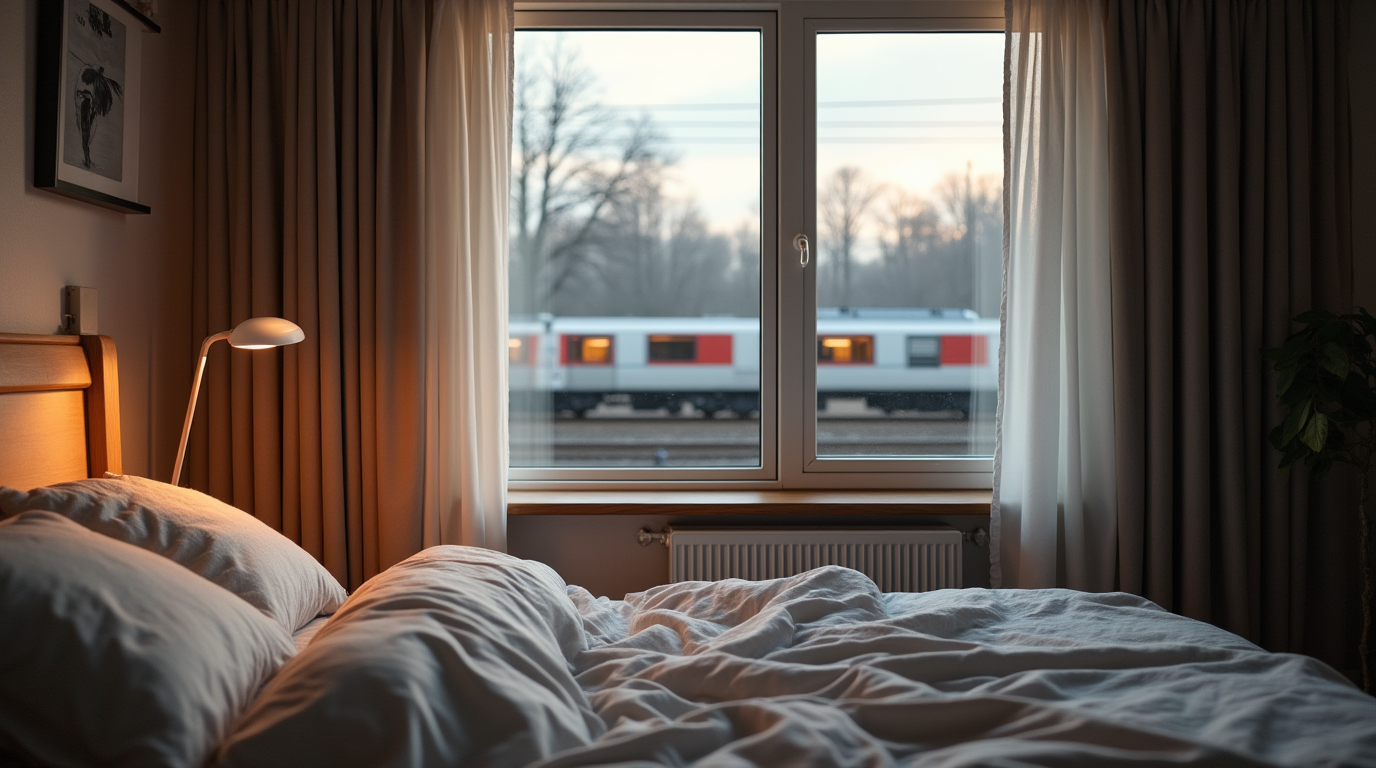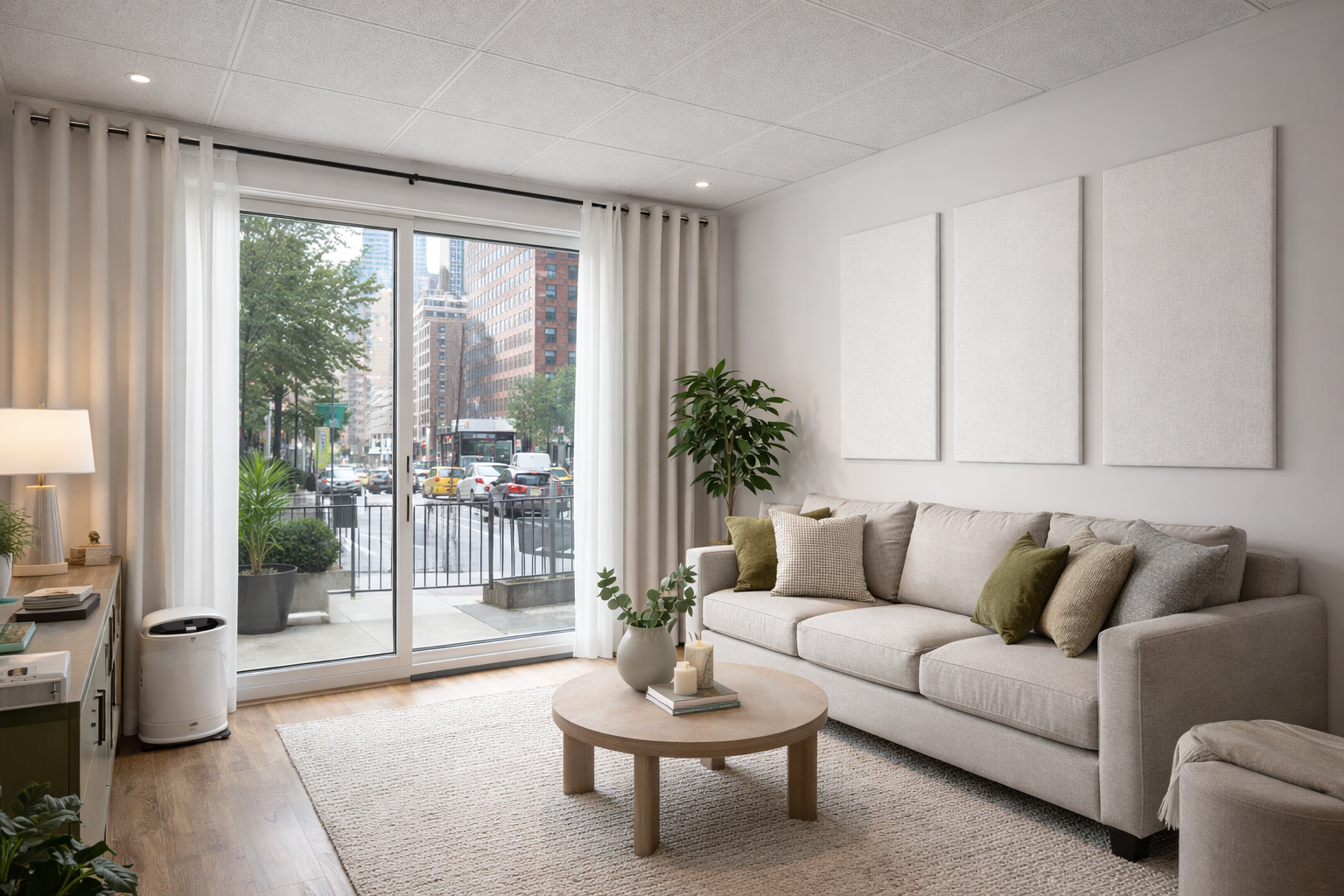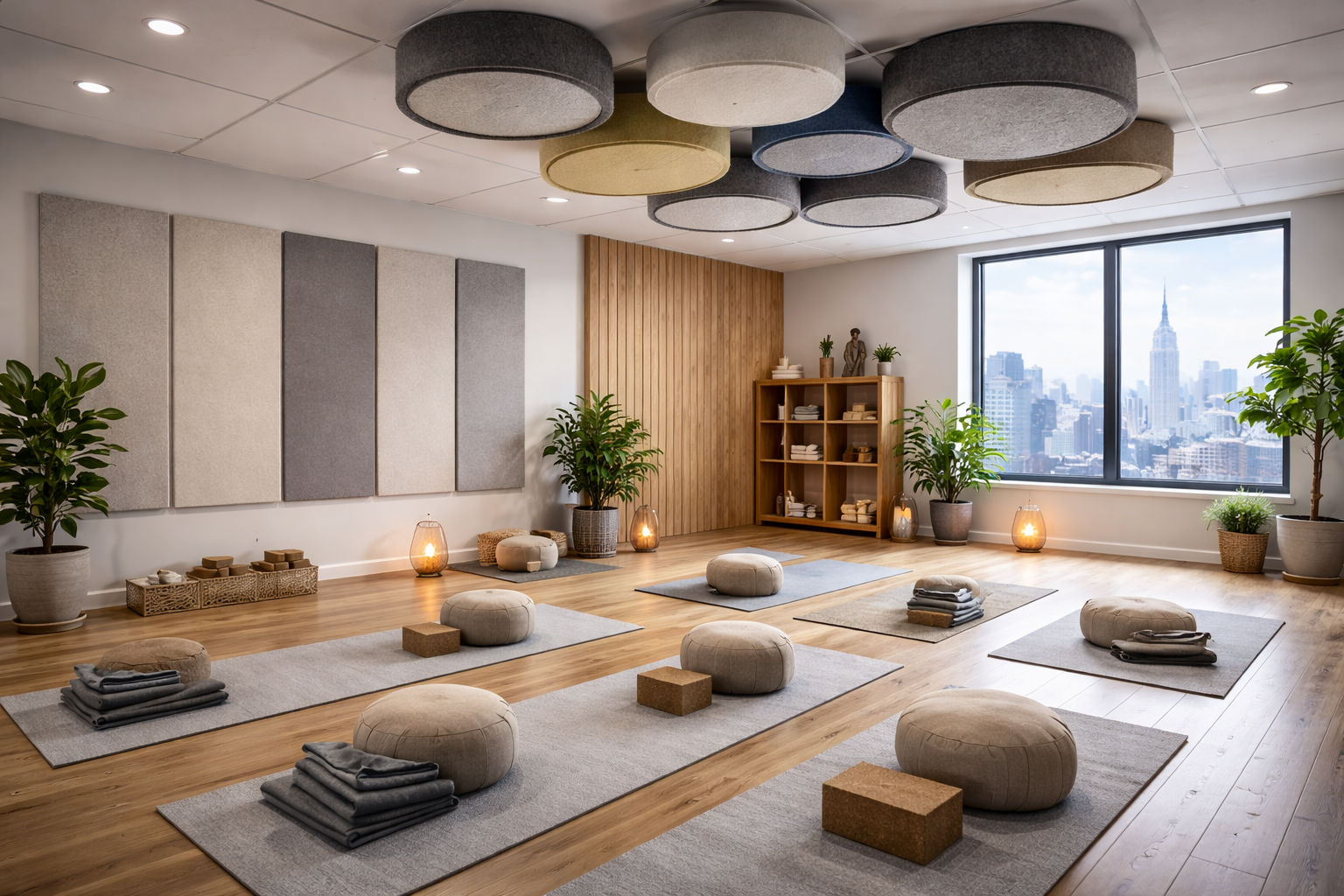Effective Solutions How to Block Train Noise
Living near train tracks can be convenient—but also loud. The rumble, horn blasts, and vibrations can disrupt your sleep, focus, and peace of mind. You're not alone if you're wondering how to block train noise.
Train noise doesn't just interrupt conversations or TV time—it can impact health over time. Chronic exposure to low-frequency sound is linked to stress, fatigue, and poor sleep. Luckily, there are ways to reduce it.
This guide'll walk you through practical solutions—from quick DIY fixes to full structural treatments. Whether you're a homeowner or a tenant, you'll find proven strategies to reclaim your quiet.
Assessing Your Train Noise Problem
To solve a noise problem, ask yourself some basic questions. When does the noise bother me the most? In the morning? In the evening? During meetings or sleep? Is it a hum, an engine, or a vibration?
Then determine how the noise enters the room. Walk around the house while the train is passing and note where it sounds the loudest. Usually the sound is amplified in the window or door area, if the walls are thin, and if there are gaps in the ceiling.
An easy way to check this is to use a decibel measurement app. Take readings in different rooms at different times. You'll quickly realize which areas need treatment.
The most effective approach to soundproofing involves using multiple layers - blocking, absorbing and insulating.
Exterior Solutions to Block Train Noise
Sometimes, the best noise control starts outside. Landscaping can make a surprising difference. A row of dense evergreen trees, combined with a berm (a raised earth mound), can deflect sound waves before they hit your home.
Tall fences made from sound-reflective materials—like masonry, stone, or special acoustic barriers—can also reduce incoming noise. Just ensure they're solid and high enough (ideally 8 feet or more) to interrupt the sound path.
Some homeowners install exterior walls or facades with added mass to help bounce sound away. These can be designed to blend with the architecture while serving as a first line of defense.
It's also worth engaging with local government or community boards in some neighborhoods. Noise barriers along train lines may qualify for public funding or shared investment.
Window Treatments
Windows are usually the weakest link when it comes to soundproofing. Thin glass and leaky frames let in outside noise with little resistance. Laminated or double-pane soundproof window systems are an effective upgrade, creating a solid barrier against noise.
If full window replacement isn't in your budget, window inserts are a smart alternative. These clear acrylic panels fit into your existing frames, creating a sealed air gap that helps block sound. They're easy to install and deliver noticeable results.
Another layer of defense? Acoustic curtains. They won't block all sound, but they will help absorb sound in the room-especially mid and high frequencies. That means less echo and an overall quieter feel.
Don't overlook the little things. Sealing gaps around the frame with weather stripping, acoustical caulking, or compression gaskets can reduce sound leaks more than you'd expect. Sometimes it's the little fixes that make the biggest difference.
Wall Insulation and Treatments
If train noise still comes through, your walls need an upgrade. Adding extra mass—like a second layer of sound-dampening drywall—can help block more of that deep, low-frequency rumble that trains often produce.
Inside the walls, high-density insulation materials work best. Options like mineral wool, rockwool, or cellulose outperform standard fiberglass for blocking sound. They’re especially effective at handling those lower tones that typical insulation struggles with.
Another smart move for wall soundproofing? Installing resilient channels between the drywall and studs. This creates separation, or “decoupling,” which helps prevent vibrations from traveling through the structure.
For the best results, consider a custom approach. At New York Soundproofing, we design wall systems that combine mass, insulation, and vibration control—tailored specifically to your home’s layout and acoustic challenges.
Ceiling and Floor Solutions
If your space is impacted by overhead train noise—such as elevated tracks or upper-floor reverberation—ceilings need attention.This is where ceiling soundproofing comes in handy. One option is to install isolation clips and acoustic channels before adding dense drywall. This setup reduces direct vibration transfer.
Ceiling panels or suspended acoustic treatments can also absorb internal echo and add another layer of protection.
On the floor side, impact and structure-borne noise can travel upward and downward. Floating floors, made with rubber underlayment or acoustic mats isolate footsteps and vibrations. Even thick area rugs with soundproof pads can help in upper units.
Vibration is often half the battle. If the train is close enough to shake your home, reducing that movement is just as important as blocking sound.
Door Sealing and Reinforcement
Doors are often overlooked in soundproofing, but they’re one of the most common noise entry points—especially if they’re hollow-core. These lightweight doors do little to block sound. Swapping them out for solid-core doors is a quick and effective upgrade that can make a noticeable difference.
To boost performance, seal around the door frame with quality weather stripping. Add a door sweep at the bottom to close the gap and stop noise from slipping underneath. For even better results, consider installing an acoustic threshold and applying mass-loaded vinyl directly to the door surface.
In high-noise areas, especially those facing train lines, creating an “airlock” by adding a second door or small vestibule can dramatically reduce sound transfer. That extra layer of separation helps stop noise before it reaches your main living space.
As a rule of thumb: if light or air can pass through, so can sound. Proper sealing is essential.
You can contact us for door soundproofing installation.
Interior Solutions to Block Out Train Noise
Even with strong exterior defenses, sound can still sneak in. That's where interior elements come into play. The goal is to absorb and soften what's left—to make your space feel calmer and more controlled.
Strategic furniture placement helps more than most people realize. Bookshelves filled with books, upholstered couches, thick rugs, and padded headboards absorb sound and reduce echo.
Sound-absorbing decorative elements—like acoustic wall panels, fabric art panels, or ceiling clouds—can be integrated into your space without looking industrial. These treatments absorb mid- and high-frequency noise and prevent it from bouncing around.
White noise machines are another powerful tool. They don't remove the sound but help mask it with a consistent background hum, making train noise less noticeable. Sound masking systems can be especially effective at night or during focused work.
Creating a quiet zone—like a bedroom or home office—with extra layers of protection ensures you always have a peaceful space, even if the rest of the home has yet to be fully treated.
Quick Fixes vs. Long-Term Solutions
If you're wondering how to block out train noise fast, there are temporary fixes you can try. Draft blockers, heavy curtains, white noise machines, and window inserts can bring some immediate relief.
But for lasting comfort, it's best to take a phased approach. Start by identifying the worst noise sources, then tackle the most vulnerable entry points—usually windows, walls, and doors. Prioritize upgrades that offer the best performance for your budget.
Some clients invest in a full retrofit up front, while others spread projects out over time. We help build that plan, so you're not guessing. Whether you need short-term relief or a long-term solution, there's always a path forward. In turn, we are always ready to help you with apartments soundproofing.
Learning how to block train noise is about combining smart design with proven materials. No single solution does it all—but layered strategies work. With the right mix of sealing, insulation, and absorption, your space can become quieter, more peaceful, and more livable.
At New York Soundproofing, we design solutions for real-world spaces—homes, apartments, studios, and offices near train lines. If you're ready to control the sound in your environment, reach out for a consultation. We'll help you find the right plan and get it done right.
Want a quieter home? You're closer than you think.



